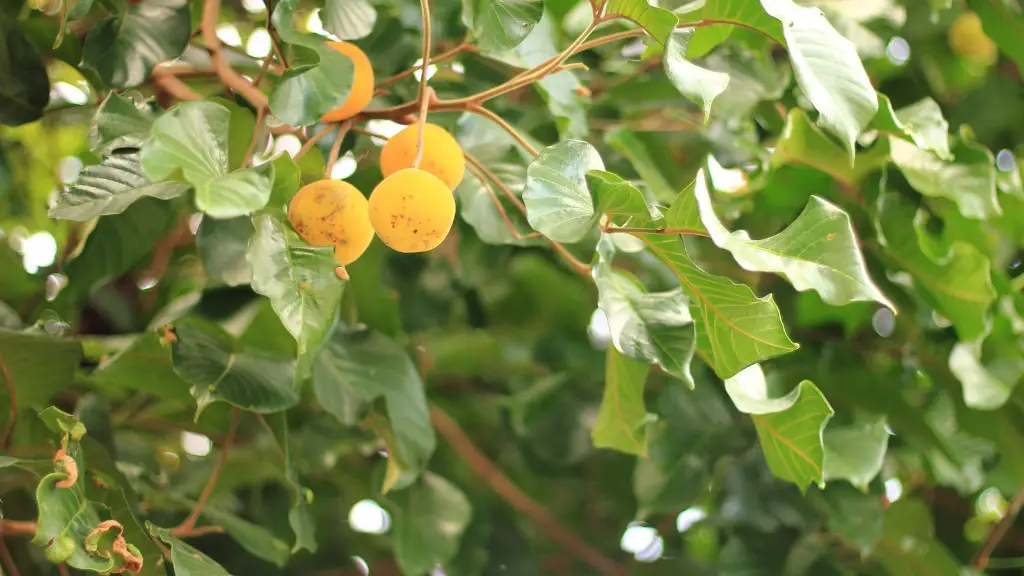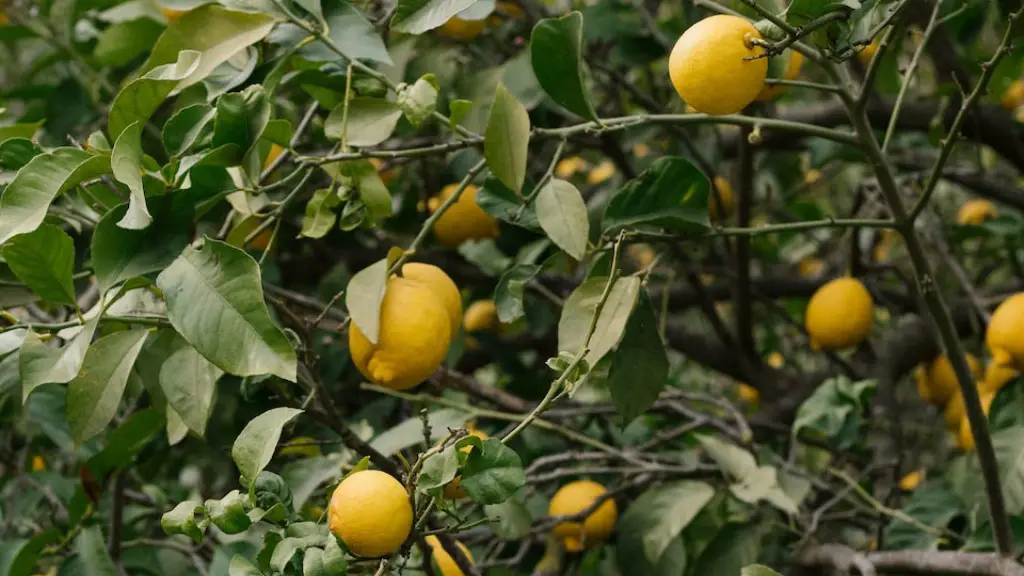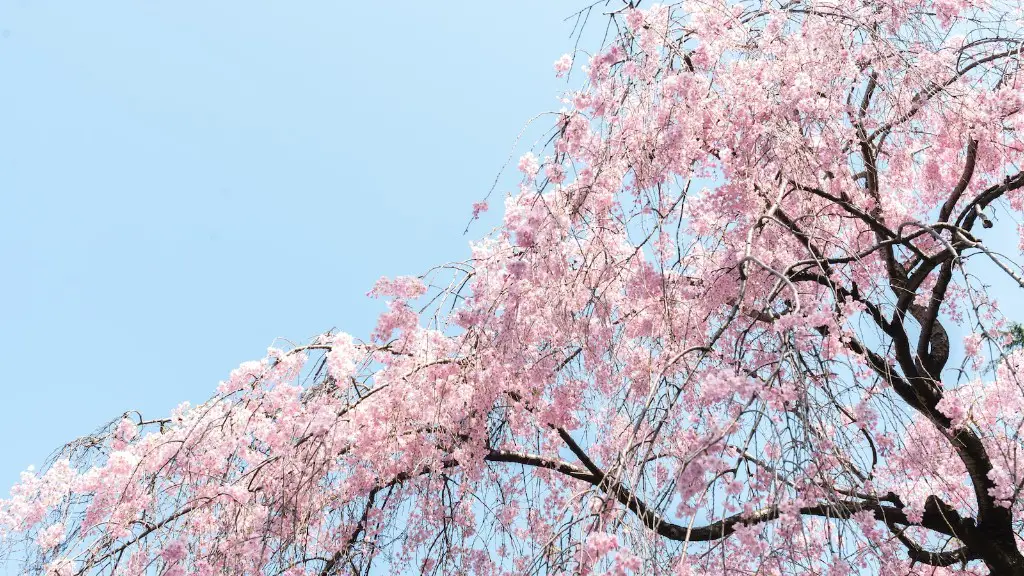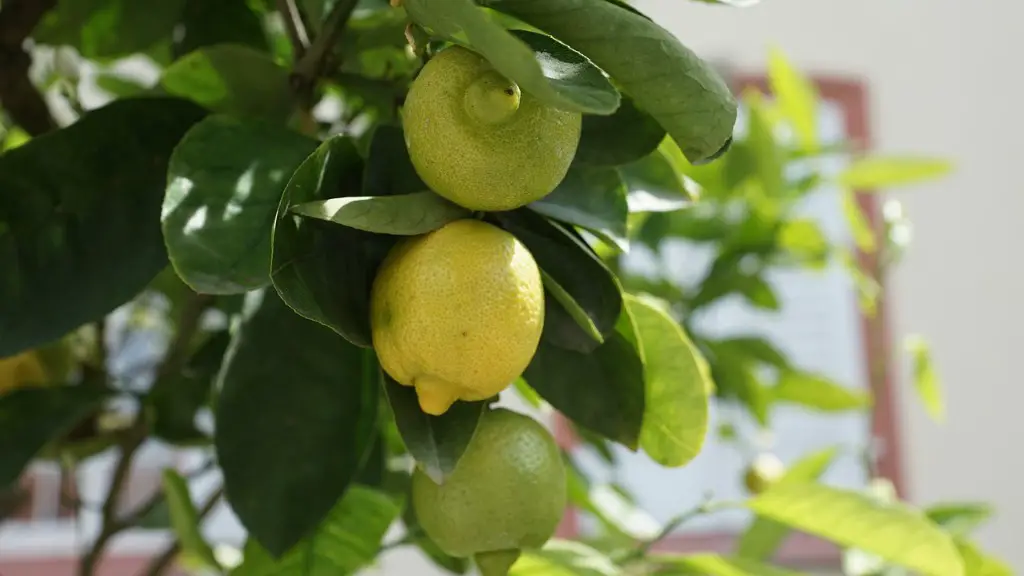Lemon trees are a beautiful addition to any home, providing fresh and unique-tasting citrus fruits year-round. Caring for your lemon tree is essential if you want it to thrive. With a few simple steps, you’ll be able to create an abundant orchard straight from your backyard. Here’s how to create the ideal environment and care for your lemon tree properly.
To start, you’ll want to choose the right spot. Your lemon tree should be planted in an area that gets plenty of direct sunlight throughout the day, so it’s best to pick a spot that receives full sun for at least 6-8 hours a day. It’s also important to pick a spot with well-drained soil, so it’s best to stay away from areas that are prone to flooding or heavy rains.
Once you’ve chosen the spot, start planting your lemon tree. Make sure you dig a hole that is twice as wide as the root ball and only as deep as the root ball. After the hole is ready, place the tree in the hole, fill the hole with soil, and tamp the soil around the base of the tree with your hands or a trowel. Be sure the soil is evenly packed around the tree’s root system.
Watering is essential to keeping your lemon tree healthy and producing lots of fruit. Water your lemon tree deeply and regularly, meaning you should give it a good long drink when it needs it. Keep in mind that citrus trees prefer a moist but not soggy soil, so allow the top few inches to dry before watering again. Lastly, mulch your lemon tree to retain moisture and keep weeds down.
Fertilizing is also important for promoting a healthy, abundant harvest. Citrus trees prefer fertilizers that are low in nitrogen and high in phosphorus, so look for a fertilizer with an N-P-K ratio of 8-2-12. Apply the fertilizer to the base of the tree and out from the trunk about 18 inches and water it in.
Regular pruning is also important for maintaining a healthy and productive lemon tree. Pruning should be done in the spring and again in the summer. Start by removing any dead, diseased, or damaged branches and then selectively remove any branches that are overlapping or growing too close together. Be sure to use a sharp pair of pruning shears so your cuts are clean and free of any yeast or bacteria.
Finally, make sure you follow proper pest-control procedures to keep your lemon tree healthy. Monitor your lemon tree carefully for signs of pests and use insecticidal soaps or oils if necessary. Keeping your lemon tree healthy is essential for getting a bountiful harvest.
Preparation
Preparing the right environment is one of the most important tasks in caring for your lemon tree. As with any plant, making sure you have the right soil, sun, and temperature will go a long way to helping your tree thrive. When preparing the soil for your lemon tree, make sure it is well-drained and work in plenty of organic matter such as compost or manure. Citrus trees need plenty of direct sunlight, so make sure you pick a spot where your tree will get at least 6-8 hours a day.
In addition to making sure you have good soil, sun, and temperature, it is also important to use the proper tools when planting and caring for your lemon tree. Make sure you have a sharp shovel, pruning shears, trowel, and pair of gloves and that they are kept in good condition. This will help maximize the growth and productivity of your tree.
You should also make sure the area is free of weeds and pests. Weeds will compete with your tree for essential nutrients and water, while pests can cause significant damage to your tree and its fruit. Be sure to monitor the area closely for signs of weeds or pests and treat accordingly.
Lastly, it is important to research the best varieties of lemon trees for your climate and soil type. Do your research beforehand to make sure you are getting the best variety for your particular region and soil type.
Pruning
Pruning plays an essential role in maintaining the health and productivity of your lemon tree. Pruning helps to keep the tree healthy by removing dead, diseased, and damaged branches, as well as encouraging new growth. Prune in the spring and again in the summer. Begin by removing any dead or damaged branches, followed by selectively removing any branches that are growing too close together or overlapping. Be sure to use a clean, sharp pair of pruning shears to make sure all cuts are clean and free of any yeast or bacteria.
In addition to removing dead or damaged branches, you should also shape your tree as needed to maintain its aesthetic appeal. This can be done by selectively removing branches that are growing too close together or too far out from the trunk. Pruning can also help improve air circulation, which can lead to healthier foliage and an increase in fruit production.
It is also important to remove any suckers, which are small stems that emerge from below the graft union of the tree. Suckers should be removed as they can divert energy away from fruit production. Be sure to wear gloves when pruning and dispose of all cuttings and debris in a responsible manner.
Pruning should be done carefully and judiciously. Too much pruning can cause stress to the tree, while too little may limit fruit production. It is important to understand your tree and the pruning process before getting started.
Fertilizing
Fertilizing can be an essential tool in helping your lemon tree reach its full potential. Citrus trees prefer a fertilizer that is low in nitrogen and high in phosphorus, so look for a fertilizer with an N-P-K ratio of 8-2-12. Apply the fertilizer to the base of the tree and out from the trunk about 18 inches and water it in. Make sure to conduct a soil test beforehand to determine what fertilizer is best for your soil type and climate.
Be sure to only fertilize your lemon tree during its growing season, meaning after the frigid winter temperatures have subsided and the tree is actively producing new foliage. Be mindful of how often and how much fertilizer you are applying. Too much fertilizer can actually harm the tree, as can applying it at an incorrect time. Lastly, be sure to follow the instructions of the fertilizer carefully and in detail.
Fertilizer is not always necessary; if you carefully monitor your soil and test it periodically to make sure it is within healthy parameters, you may not need to fertilize at all. Be sure to conduct routine soil tests to determine if the soil is low in essential nutrients and whether they need to be replenished.
Watering
Lemon trees need plenty of water to stay healthy and productive. Water your tree deeply and regularly, and be sure to allow the top few inches of soil to dry out before watering again. Too much water can overwhelm the roots of the tree and cause root rot; too little can cause the leaves to dry out and reduce fruit production. Monitor your tree and keep an eye out for any signs of distress.
Additionally, mulch your lemon tree to retain moisture and keep weeds down. Make sure the mulch is natural and not dyed, as the dyes can damage the tree. A layer of 2-3 inches should suffice in most cases, with it gradually being replenished as it deteriorates over time.
Though most citrus trees are fairly drought tolerant, they still need consistent water to stay healthy. Be sure to adjust your watering schedule as needed depending on the weather and soil conditions. A weekly deep watering is usually recommended, but it may need to be adjusted depending on your particular climate.
Pest Control
Pests can cause significant damage to your lemon tree, leading to weakened growth and smaller fruit production. Monitor your tree for any signs of pests and treat accordingly with insecticidal soaps or oils. Fungal diseases can also be detrimental to your tree, so be sure to check for signs of fungi and treat promptly.
Citrus trees can also be affected by citrus rust mite, which can cause yellow mottling of the tree’s leaves. Monitor your tree for any signs of mites and treat with an approved insecticide. As with all pest control, make sure to use the pesticide according to the manufacturer’s instructions.
It is also important to make sure that your tree is free of weeds. Weeds compete with your tree for essential nutrients and water and can spread pests and disease. Be sure to conduct regular weeding sessions to eliminate any unwanted vegetation.
Lastly, protect your tree from extreme weather. Make sure it is planted in a spot that is protected from strong winds, and make sure you shield it from any big storms or temperatures that are too hot or too cold. A good set of plant-specific stakes and a protective covering can help protect your tree during any extreme weather.





